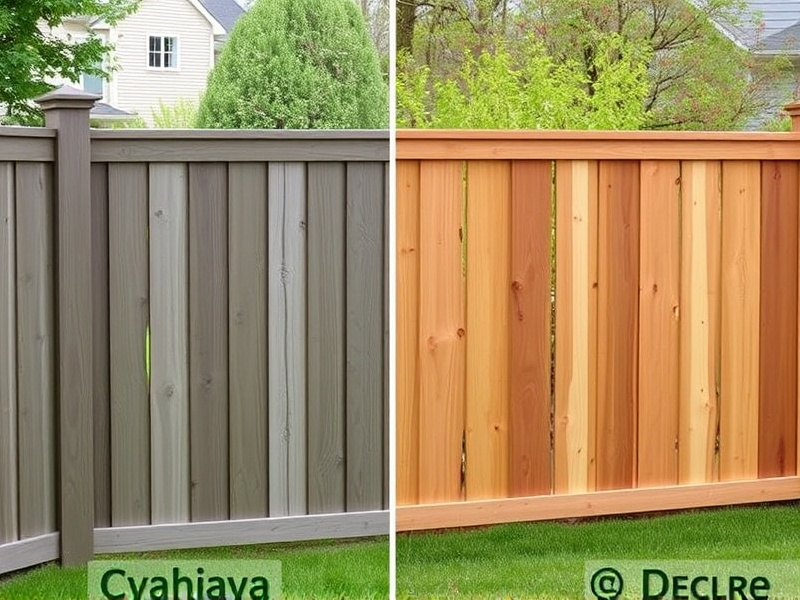Our Location
304 North Cardinal St.
Dorchester Center, MA 02124
Learn about the environmental impact of composite and wood fencing materials and how they can contribute to sustainable living.

In the world of home improvement, choosing between composite and wood fencing materials can be a daunting task. Both options offer unique benefits, but when it comes to sustainability, which one is the better choice? This article will delve into the sustainability aspects of composite and wood fences, including their production processes, longevity, recyclability, and overall carbon footprint. We’ll also highlight any certifications or eco-labels that these materials might have.
Composite fencing materials are typically made from a blend of wood fibers and recycled plastic. The production process for composites generally requires less energy compared to the extraction and processing of raw wood. However, the use of plastics in composite materials raises concerns about the environmental impact of their production and disposal. On the other hand, wood fences are made from natural resources, but the logging process can contribute significantly to deforestation if not managed sustainably.
Composite fences are known for their durability and resistance to weathering, insects, and rot, often lasting up to 20 years with minimal maintenance. In contrast, wood fences require more frequent maintenance, such as painting and sealing, to extend their lifespan, which typically ranges from 10 to 20 years. However, properly maintained wood fences can last longer and are biodegradable at the end of their life cycle.
When it comes to recycling, wood fences are highly recyclable. Once dismantled, wood can be repurposed for various applications, such as mulch, compost, or even new construction projects. Composite materials, while technically recyclable, present more challenges due to the mix of materials involved. Recycling facilities may not always accept composite materials, making it difficult for homeowners to dispose of them responsibly.
The carbon footprint of composite fences is influenced by the energy-intensive production of plastics, whereas wood fences have a lower initial carbon footprint but can contribute to deforestation if sourced unsustainably. Choosing certified wood, such as FSC (Forest Stewardship Council) certified, can mitigate this issue by ensuring that the wood comes from responsibly managed forests. Additionally, some composite manufacturers now offer products with a higher percentage of recycled content, reducing their overall carbon footprint.
Several certifications and eco-labels can help consumers make informed decisions. For example, the FSC certification ensures that wood is sourced from responsibly managed forests. Composite manufacturers like Trex and Fiberon have developed products with high recycled content and have received GreenGuard certification for indoor air quality. These certifications not only provide assurance about the environmental impact of the materials but also add value to the product in the eyes of environmentally conscious consumers.
Both composite and wood fencing materials have their pros and cons when it comes to sustainability. Composite fences offer durability and low maintenance but come with challenges related to recycling and the production of plastics. Wood fences, on the other hand, are highly recyclable and can be sourced sustainably, but they require more maintenance and may contribute to deforestation if not managed responsibly. By choosing certified materials and considering the full lifecycle of the fence, homeowners can make an eco-friendly choice that aligns with their values.
FSC – Forest Stewardship Council